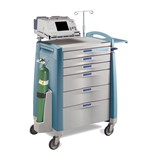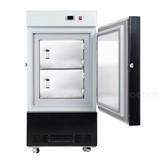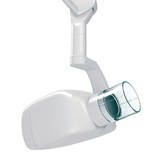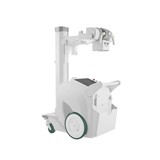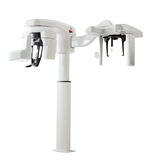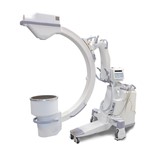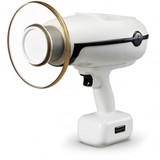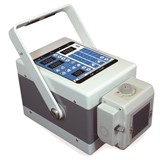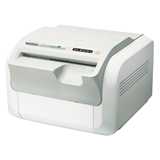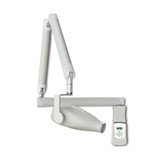Understanding the Importance of Dental Chairs in Patient Safety
Dental chairs serve as the focal point of every dental procedure, making them a critical component in ensuring patient safety. A well-designed dental chair provides proper support and positioning for patients during treatments, reducing the risk of discomfort and injury. Furthermore, it allows dental professionals to work efficiently, enhancing the overall quality of care provided.
Ergonomics and Patient Comfort: A Winning Combination
Ergonomics plays a vital role in both the comfort of patients and the well-being of dental practitioners. Dental chairs with adjustable features enable dentists to maintain a healthy posture while conducting procedures, preventing strain and long-term musculoskeletal issues. Simultaneously, patients benefit from comfortable seating positions, helping them feel at ease during treatments.
Infection Control Measures for Dental Chairs
Maintaining a hygienic environment is crucial in dental practices, and dental chairs are no exception. Strict infection control measures must be followed to minimize the risk of cross-contamination and the spread of infections.
- Sterilization Protocols and Best Practices
Regular sterilization of dental chair surfaces and accessories is essential. Dental teams must adhere to rigorous cleaning and disinfection protocols recommended by health authorities.
- Disposable Accessories: Minimizing Cross-Contamination
Using disposable accessories, such as suction tips and headrest covers, further reduces the risk of cross-contamination between patients.
- Maintenance and Regular Inspections
Routine maintenance and inspections of dental chairs are essential to identify any issues promptly and ensure their proper functioning.
Advanced Features for Enhanced Safety
Modern dental chairs are equipped with advanced features that contribute to patient safety.
- Pressure Mapping Technology
Pressure mapping technology helps dentists identify areas of high pressure on patients' bodies, enabling adjustments to prevent pressure sores and discomfort.
- Motion Sensors and Emergency Controls
Incorporating motion sensors and emergency controls ensures immediate halting of chair movements in case of emergencies, safeguarding patients from potential accidents.
- Integrated Patient Communication Systems
Patient communication systems integrated into dental chairs allow easy communication between patients and dental staff during treatments, reducing anxiety and enhancing patient cooperation.
The Role of Dental Chairs in Optimizing Workflow Efficiency
Efficient dental chairs significantly impact the workflow of dental practices, allowing dental teams to work seamlessly and provide timely treatments.
Ensuring Compliance with Regulatory Standards
Dental practices must adhere to various regulatory standards to ensure patient safety and infection control.
- ADA Guidelines
Following the guidelines set by the American Dental Association (ADA) ensures that dental practices maintain high standards of patient care and safety.
- OSHA Regulations
Complying with the Occupational Safety and Health Administration (OSHA) regulations safeguards the well-being of both patients and dental professionals.
Compliance with Infection Prevention Guidelines
Infection prevention is a critical aspect of maintaining a safe and hygienic environment in healthcare settings. Compliance with infection prevention guidelines is of utmost importance, particularly in dental practices, to safeguard the health and well-being of both patients and dental professionals. In this article, we will delve into the significance of adhering to infection prevention guidelines and the measures that dental practices should take to ensure compliance.
Understanding the Importance of Infection Prevention
Infection prevention refers to the strategies and protocols implemented to reduce the risk of infections spreading from one person to another. In dental practices, where close contact with patients is inevitable, effective infection prevention measures are essential to prevent the transmission of harmful pathogens.
Compliance with infection prevention guidelines not only protects patients from acquiring infections during dental procedures but also safeguards dental practitioners from potential occupational hazards. By strictly adhering to these guidelines, dental practices can create a safe and reassuring environment for everyone involved.
Key Infection Prevention Measures for Dental Practices
- Hand Hygiene: Proper hand hygiene is the foundation of infection prevention. Dental professionals must wash their hands thoroughly with soap and water or use alcohol-based hand sanitizers before and after each patient interaction.
- Personal Protective Equipment (PPE): Dental practitioners should wear appropriate PPE, including gloves, masks, protective eyewear, and gowns, to minimize the risk of cross-contamination.
- Sterilization and Disinfection: Dental instruments and equipment must be appropriately sterilized and disinfected between patients to ensure they are free from infectious agents.
- Surface Cleaning: Regular cleaning and disinfection of frequently touched surfaces, such as dental chairs, dental units, and doorknobs, help prevent the spread of infections.
- Medical Waste Management: Proper disposal of medical waste, including used sharps and disposable materials, is essential to prevent accidental exposure to infections.
The Role of Dental Chairs in Infection Prevention
Dental chairs, being a central element in dental treatments, can either contribute to infection prevention or become potential sources of cross-contamination. Therefore, maintaining dental chairs in a clean and hygienic condition is crucial.
- Upholstery Materials:
Dental chairs should have smooth and non-porous upholstery that can be easily cleaned and disinfected. Choosing materials resistant to stains and moisture ensures better infection control.
- Disposable Accessories:
Using disposable covers for dental chair headrests and handles prevents direct contact with the chair's surfaces and minimizes the risk of cross-contamination.
- Regular Maintenance:
Routine maintenance and inspection of dental chairs help identify any defects or damages that could compromise infection prevention measures.
Staff Training and Education
Ensuring compliance with infection prevention guidelines requires the active participation of all dental staff. Proper training and education on infection control protocols are essential to create a culture of safety within the dental practice.
Dental professionals should stay updated with the latest guidelines and best practices related to infection prevention. Regular training sessions and workshops can help reinforce the importance of these measures and address any concerns or queries.
Monitoring and Auditing
Regular monitoring and auditing of infection prevention practices within the dental practice help identify areas that need improvement. Conducting internal audits and seeking feedback from staff and patients can provide valuable insights into the effectiveness of existing protocols.
Any deviations from the infection prevention guidelines should be promptly addressed, and corrective actions should be implemented to prevent future occurrences.
Antimicrobial and Easy-to-Clean Chair Surfaces in Dentistry
In the pursuit of maintaining a clean and hygienic dental environment, dental chair manufacturers have introduced innovative solutions to enhance infection control measures. Antimicrobial and easy-to-clean chair surfaces have become a crucial focus in modern dentistry, offering dental professionals an added layer of protection against harmful microorganisms and facilitating efficient cleaning protocols. Let's explore the significance and benefits of antimicrobial and easy-to-clean chair surfaces in dental practice.
1. Enhanced Infection Control
Antimicrobial chair surfaces are designed to inhibit the growth and spread of bacteria, viruses, and other harmful microorganisms. These surfaces are treated with specialized coatings or materials that have antimicrobial properties, making them less conducive to microbial colonization. By minimizing the presence of pathogens on chair surfaces, the risk of cross-contamination between patients is significantly reduced.
2. Protection Against Germs
Dental chairs are exposed to various germs and contaminants during patient treatments. Antimicrobial surfaces act as an active defense mechanism, continuously working to neutralize or eliminate these germs on contact. This protective barrier helps maintain a cleaner dental environment, promoting patient safety and overall practice hygiene.
3. Simplified Cleaning Protocols
Easy-to-clean chair surfaces streamline the disinfection and cleaning process in the dental operatory. Non-porous and smooth surfaces prevent the absorption of fluids and debris, making it easier for dental professionals to wipe down and disinfect the chairs between patients. The time and effort saved during cleaning contribute to a more efficient workflow and faster turnaround times for patient appointments.
4. Reduced Risk of Contamination
Antimicrobial and easy-to-clean chair surfaces play a crucial role in reducing the risk of contamination during dental procedures. The ability to quickly and effectively disinfect the chairs after each patient minimizes the likelihood of residual pathogens being transferred to subsequent patients. This proactive approach to infection control helps maintain a safer environment for both patients and dental professionals.
5. Long-Term Durability
The antimicrobial properties integrated into chair surfaces are designed to last, providing long-term protection against microbial growth. The durability of these surfaces ensures that the antimicrobial benefits persist throughout the life span of the dental chair, contributing to the ongoing maintenance of a hygienic dental operatory.
6. Sterilization and Disinfection of Chair Components
Sterilization and disinfection are fundamental practices in maintaining a safe and hygienic environment in dental practices. Dental chairs, being one of the most frequently used components in dental treatments, require special attention when it comes to infection prevention. In this article, we will explore the importance of sterilizing and disinfecting dental chair components and the best practices that dental professionals should follow to ensure patient safety and infection control.
Sterilization:
Sterilization refers to the complete elimination of all forms of microbial life, including bacteria, viruses, and spores. Dental instruments that come into contact with a patient's blood, saliva, or oral tissues must be sterilized to prevent the transmission of infectious agents from one patient to another.
Disinfection:
Disinfection, on the other hand, involves the use of chemical agents to eliminate or reduce the number of microorganisms on surfaces and non-critical instruments. While disinfection does not achieve the same level of microbial elimination as sterilization, it significantly reduces the risk of cross-contamination.
Dental Chair Components Requiring Sterilization and Disinfection
In a dental chair, several components require regular sterilization and disinfection to ensure patient safety:
- High-speed and Low-speed Handpieces: Dental handpieces, including high-speed and low-speed ones, come into direct contact with patients' oral tissues during procedures, making them critical items to sterilize.
- Air/Water Syringes: These syringes deliver air and water during dental procedures, and they should be thoroughly disinfected between patients.
- Suction Tips: Suction tips aid in removing saliva and debris from the patient's mouth, and they should be single-use or properly sterilized after each use.
- Scaler Tips and Ultrasonic Inserts: These instruments used for dental cleanings should be thoroughly sterilized to prevent cross-contamination.
- X-ray Cone and Tube Head: The X-ray cone and tube head should be disinfected regularly since they are frequently touched during X-ray procedures.
- Headrest and Armrests: Surfaces such as the headrest and armrests that come into contact with patients should be disinfected between each patient.
Best Practices for Sterilization and Disinfection
To ensure effective sterilization and disinfection of dental chair components, dental practices should adhere to the following best practices:
- Establish Standard Operating Procedures (SOPs): Develop clear and comprehensive SOPs for the sterilization and disinfection process. SOPs should include step-by-step instructions for each component and specify the type of sterilization or disinfection method to be used.
- Use FDA-Approved Disinfectants: Select disinfectants that are approved by the U.S. Food and Drug Administration (FDA) and recommended by relevant health authorities. Follow the manufacturer's instructions for proper use and contact time.
- Autoclave for Sterilization: Use autoclaves for instrument sterilization, as they are highly effective in achieving complete sterilization. Regularly check the autoclave's functionality and conduct spore tests to validate its performance.
- Chemical Indicators: Utilize chemical indicators, such as tapes or strips, to verify that the autoclave cycle has reached the appropriate temperature and pressure for sterilization.
- Dispose of Single-Use Items Properly: Items labeled as single-use should not be reprocessed. Ensure proper disposal of single-use items to avoid any potential contamination.
- Frequent Surface Cleaning: Regularly clean and disinfect dental chair surfaces, including the headrest, armrests, and control panels, using appropriate disinfectants.
- Personal Protective Equipment (PPE): Wear appropriate PPE, such as gloves and masks, during the sterilization and disinfection process to protect against potential exposure to infectious agents.
- Record-Keeping: Maintain detailed records of sterilization and disinfection procedures, including the date, time, and personnel responsible for the process.
Conclusion
Dental chairs play a pivotal role in ensuring patient safety and infection control in dental practices. By investing in well-designed, technologically advanced, and eco-friendly dental chairs, dental professionals can enhance patient comfort, workflow efficiency, and overall treatment quality. Prioritizing patient safety and infection control will continue to shape the future of dental chairs, making them an indispensable component of modern dentistry.
















